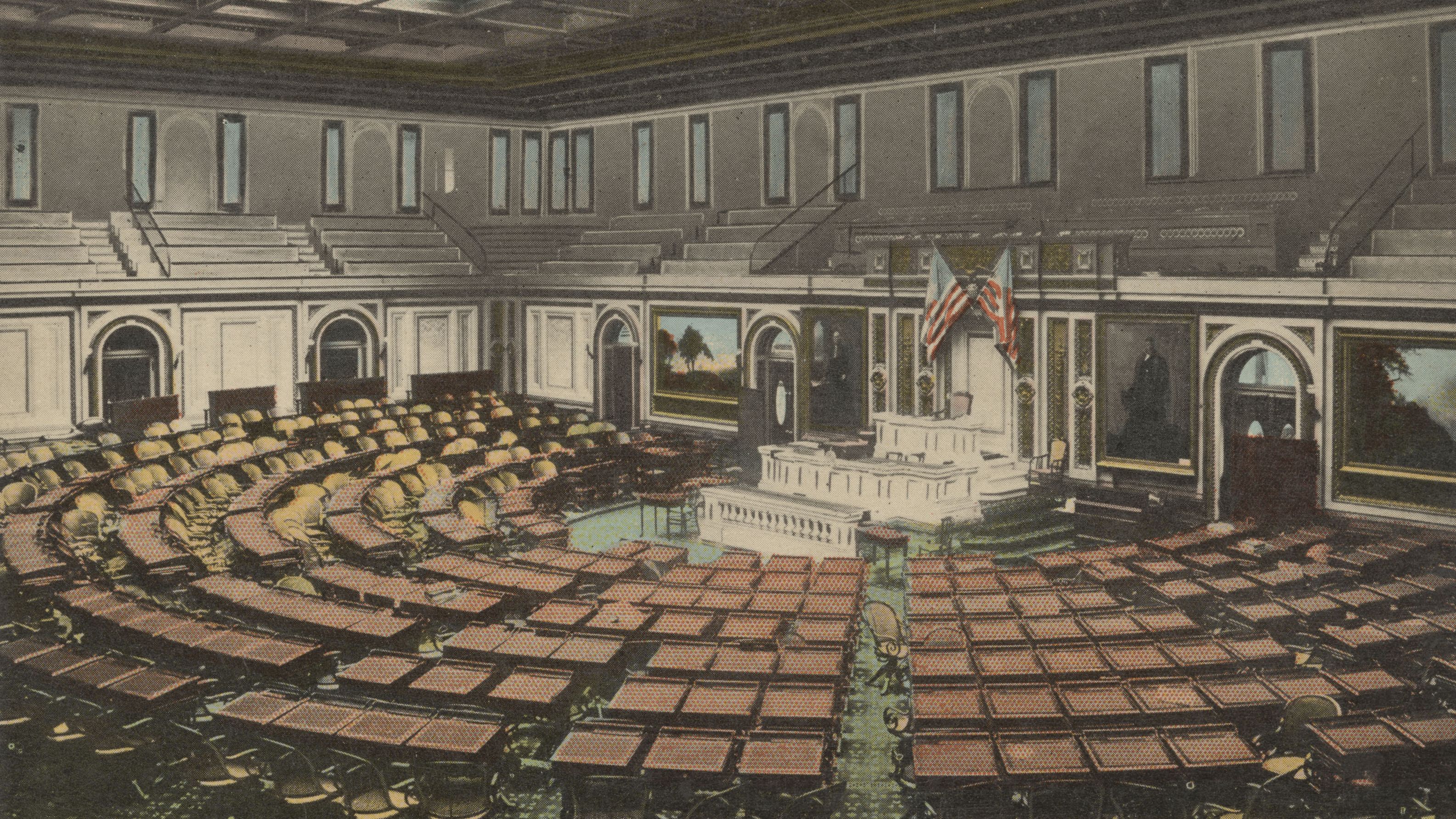How We Got Here
The framers of the Constitution made clear that they expected the size of the House to be reconsidered every ten years. This happened after every census until 1920s, when the House passed a statute formally freezing the size at 435 Representatives.

Frozen at 435
While the Constitution does not mandate the size of the House of Representatives, the subject was extensively discussed when Article I was first drafted. After lengthy debates, George Washington tried to settle the matter himself declaring that the target number should be one member for every 30,000 persons.
When James Madison proposed the Bill of Rights, the very first Amendment would have established a ratio of one member per every 30,000 persons and eventually grow to a ratio of one member per every 50,000 persons. Under the formula that Madison sought to mandate, the House of Representatives would have about 6,500 members today.
The number of representatives will be augmented from time to time[.]”

The tradition of an expanding House of Representatives
In the first Congress, the House of Representatives had only 65 members. After the 1790 census, the Apportionment Act of 1792 increased it to 105 members. The Apportionment Act of 1802 increased it further to 142 members. This pattern continued until the Apportionment Act of 1911, which was the first to set the number of voting representatives at 435.
Following the 1920 census, the 67th Congress failed to pass an Apportionment Act at all due to a deadlock over the politics of which states would stand to gain the most if the House expanded again. Seats were reapportioned in 1923, but the House remained at 435 voting members.
The Permanent Apportionment Act of 1929 froze the House membership at a number that was informed by the 1910 census, but the total population as of that census (about 92 million people) is now surpassed by only the four largest states.





The framers of the Constitution expected the size of the House to be revisited every ten years.
This is exactly what happened after every census until the 1920s.
Since then, the U.S. population has more than tripled…
…while the House has remained fixed at 435 representatives.
The result is a representative-to-constituent ratio over 25 times the one recommended by Washington and Madison.
The modern capacity crunch
Congress not only serves a growing population, but also plays an oversight role over a growing executive branch and administrative state. However, Congressional power relative to other branches declines if it lacks the necessary capacity to keep up.
Leading up to the turn of the 21st century, Congress suddenly began shedding staff, reducing its own capacity even as legislation was becoming more complex. Today, the federal workforce—including contractors and grantees—is upwards of 9 million. Meanwhile, Congress’ current workforce—across the entire Legislative Branch—hovers around 31,000.
Moreover, the Supreme Court’s decision to strike down Chevron deference—the doctrine that deferred to reasonable agency interpretations of statutes—will likely result in a transfer of responsibility from administrative agencies back to Congress, which can no longer rely on well-staffed agencies to fill-in gaps in the law and may instead finally have to face its own capacity issues.
To meet modern needs, Congress needs to both modernize in order to work more efficiently and increase its capacity, too.
[Congress] is now in need of a complete overhaul to enable Congress to efficiently handle the expanding problems of the postwar world.”

Efforts at modernization
In the light of Congress’s capacity crunch, Congress has conducted several reviews—both official and unofficial—of the House of Representatives, its legislative operations, and its facilities and buildings. While previous efforts have included successes, none of these addressed the size of Congress. A list of these efforts is available in the full report.
The recent House Select Committee on the Modernization of Congress—and its successor, the Committee on House Administration Subcommittee on Modernization—has made important incremental improvements to the Capitol Campus. However, implementation has been difficult, and 10 relevant recommendations remain open, with only two actively in progress.
An influx of additional Representatives, if the House were expanded, would bring additional need for offices, staff, and all the tools and technologies that go into doing legislative work. Such a change would require a serious commitment to the already ongoing work and a more ambitious vision for congressional modernization.
The Capitol Campus of Tomorrow
Seven solutions for an expanded House of Representatives

Photo credits from top: Collection of the U.S. House of Representatives; Collection of the U.S. House of Representatives; Library of Congress.
|
|
|||
|
|
|
||
©2024, Protect Democracy and POPVOX Foundation. Terms and conditions



